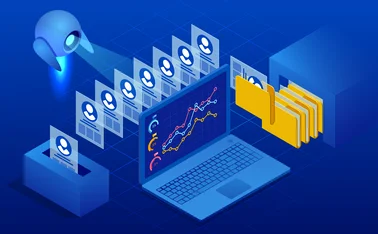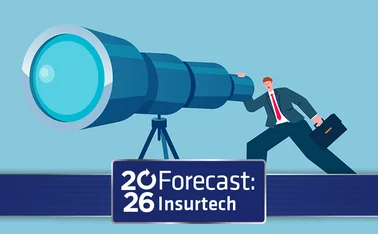
Blog: Insuring automated vehicles will require data sharing

Need to know
- When an automated car crashes, its data needs to be accessed to assess liability
- There will be conflict of interest if motor manufacturers control the data
- An independent body could manage the disclosure of data - but that solution may be expensive
- Insurers and manufacturers should agree a voluntary protocol on data access
Private and commercial vehicles with advanced automated functions are going to gradually enter the UK market over the next few years. In addition to changes to the regulations governing vehicle type-approval, a number of amendments need to be made to the UK's insurance framework.
The government has rightly recognised that there is a future risk in the existing insurance law: innocent parties that are injured when an automated vehicle causes an accident would face an unclear route to compensation, including disengaged drivers where they are ‘out of the loop'. Currently, motor insurers may not be responsible for compensating any party injured by a (fully) automated function failure if their insured is not at fault - because the car was driving itself.
New insurance rules for self-driving cars were introduced on Wednesday as part of the Vehicle Technology and Aviation Bill. A single insurance product for automated vehicles will now be able to cover both the motorist when they are driving, as well as the car when it is in automated mode.
This means that both the disengaged ‘driver' and third parties will be covered by the insurer if a loss is caused by the failure of automated technology. This will most likely be implemented by creating a direct right of action against the insurer, where automated technology was at fault. The new liability will be tightly framed, with insurers only able to avoid liability in circumstances where the motorist has made unauthorised modifications to the vehicle's operating system or failed to install required updates to the vehicle's operating system.
One issue for insurers is that given the above are the only proposed exceptions, insurers will not be able to avoid liability where autonomous technology causes a crash following being hacked - although where the manufacturer is at fault, the insurer may be able to recover.
How do you ensure proper access to vehicle data, to discover whether or not an accident was the manufacturer's fault or not?
Timely access to vehicle data, in order to help determine if an insured or the automated technology is at fault, is a critical issue facing motor insurers. Accessing event data is clearly an essential precursor to deciding whether or not to pursue a subrogated recovery against a vehicle manufacturer in the first place. Vehicle manufacturers have a significant conflict of interest if they control the data.
We need a system that guarantees both data access and veracity. The Centre for Connected and Autonomous Vehicles has formally acknowledged that a ‘data-sharing framework' is required to underpin the proposed changes to insurance law.
The ideal solution would be an independent body that manages the disclosure of data to parties with a legitimate interest, but this may be prohibitively expensive. The relevant data itself is likely to come from event data recorders, which are already fitted to many vehicles and are likely to be regulated internationally. Insurers will be recommending that devices must capture a minimum dataset that will enable them to determine liability and detect fraud, including:
• GPS-event time stamp and location
• Automatically commanded steering functions status (on or off)
• ACSF transition time stamp
• Record of driver intervention (steering, braking, throttle or indicator)
• Time since last driver interaction
• Driver seat occupancy
• Driver belt latch
It may be possible, perhaps desirable, for insurers and manufacturers to agree a voluntary protocol on data access, with the statutory framework kept at a relatively high level. Sensible management of this issue is critical. There could be severe commercial implications for vehicle manufacturers if they gain a reputation for dodging or delaying paying recoveries to insurers where their technology has failed and caused losses: insurers could refuse to insure their vehicles.
Motor Insurance World
 Following a fantastic launch, we are delighted to announce the return of Motor Insurance World for 2017.
Following a fantastic launch, we are delighted to announce the return of Motor Insurance World for 2017.
Last year saw more than 35 speakers from insurers, driverless car leaders and motor manufacturers, plus the Under Secretary of State from the Department for Transport.
The road to success in a rapidly changing motor world remains anything but smooth, and technology continues to disrupt. The motor insurance market will have to innovate like never before in order to serve the customers of today and tomorrow.
Register your interest today to be the first to hear when the exciting plans are unveiled, at www.motorinsuranceworld.co.uk
Only users who have a paid subscription or are part of a corporate subscription are able to print or copy content.
To access these options, along with all other subscription benefits, please contact info@postonline.co.uk or view our subscription options here: https://subscriptions.postonline.co.uk/subscribe
You are currently unable to print this content. Please contact info@postonline.co.uk to find out more.
You are currently unable to copy this content. Please contact info@postonline.co.uk to find out more.
Copyright Infopro Digital Limited. All rights reserved.
As outlined in our terms and conditions, https://www.infopro-digital.com/terms-and-conditions/subscriptions/ (point 2.4), printing is limited to a single copy.
If you would like to purchase additional rights please email info@postonline.co.uk
Copyright Infopro Digital Limited. All rights reserved.
You may share this content using our article tools. As outlined in our terms and conditions, https://www.infopro-digital.com/terms-and-conditions/subscriptions/ (clause 2.4), an Authorised User may only make one copy of the materials for their own personal use. You must also comply with the restrictions in clause 2.5.
If you would like to purchase additional rights please email info@postonline.co.uk








